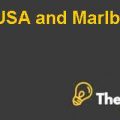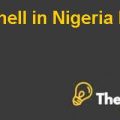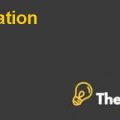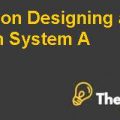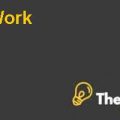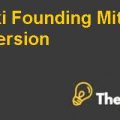Global Financial Strategy Project Case Study Solution
Role of Subsidiary
The multinational companies are the one which consist of at least one subsidiary company operating in different country. Headquarter of a particular company could be located in any country which is considered as the parent company under which the subsidiary of that particular company operates. Sometimes the operations and the decision making of the subsidiary are controlled by the parent company who possess majority of stakes within the subsidiary and sometimes the parents possess limited decision making control over the subsidiary company. Hence the role of subsidiary is discussed in detail below.
Production Facility
The advantage that can be attained by incorporating subsidiary in different countries is exploiting other markets internationally by producing and selling goods in a particular country where the subsidiary company is operating. Hence, the role of subsidiary is to increase the customer as well as the revenue base of the company eliminating the cost of delivering from one country to another country where the demand of the product is quite high (James A. Ligon, 2018).
Financial Incentive
The subsidiary would enable the parent company to increase the financial incentive by exploiting the other market internationally where the demand of the particular product can be determined.
Availability of Raw Material
The subsidiary provides an advantage of producing goods and services which the parent company cannot provide in the country where it is locate due to the shortage of high price of the raw material. Hence, availability of cheap raw material and demand in different country enables the company to produce and sell goods within a particular country.
ERP Systems in Relation with Parent Subsidiary Companies
Enterprise resource planning system is one of the important aspect of the global supply chain management system among the parent and the subsidiary company to enhance the effectiveness of collaboration between the parent and the subsidiary company. The ERP system provides the boost to the supply chain management system by enhancing the quality of communication, synergy effects, and degree of local management (Esther Tippmann, 2018). In parent subsidiary relationship, the parent company tends to send and provides goods and services to the subsidiary company and in order to enhance the efficiency among the parent subsidiary company the ERP system plays an important role in completing the process between the companies whether the process involves synergy effects, communication, delivery, and management of products.
Suitable Entry mode for Johnson and Johnson
Johnson and Johnson is one of the leading multinational pharmaceutical company recognized in the world. Many of its product are exported across disparate countries of the world. The most suitable entry for Johnson and Johnson is to enter as a Greenfield venture i.e. the company needs to enter into the market as a wholly new subsidiary. Due to the vast experience in different part of the world, Johnson and Johnson could manage to study the market trends prevailing in France and enter as a wholly new subsidiary. The problem of local market knowledge can be solved by hiring the experienced employee of that particular country which enable the company to understand and cope up with the local pharmaceutical and health care industry. Although, entering as a Greenfield venture the cost of entering a new market will be high and setup time will also be high but due to the large sized multinational company, Johnson and Johnson could afford the high cost, high risk and the setup time to establish a subsidiary in the market of France.
Identification of WACC and Required Rate of Return of the Subsidiary
Johnson and Johnson company is focused on maintain the WACC and the required rate of return of the subsidiary to that of parent company which is situated in the United States of America. However, the WACC and the required rate of return could not be the same as the parent company because of the interest rate and macro-economic factors prevailing in the country where the subsidiary company is operating (Ben-Nasr, 2016). Hence, the WACC of subsidiary in France according to their policy rate and macro-economic environment is 2.98% and the required rate of return is 4.04% (Ambrogio Cesa-Bianchi, 2019).
| Data | |||
| Wd | Weight of debt | Wd/Total capital= | 41% |
| We | Weight of equity | We/Total capital= | 59% |
| Cd | cost of debt | Int. exp/total debt= | 2.23% |
| Ce | cost of equity | Rf+B(Rm-Rf)= | 4.04% |
| T | tax rate | 35% | |
| B | beta | 0.62 | |
| Rf | risk free rate | 0.38% | |
| (Rm-Rf) | market risk premium | 5.9% | |
| WACC= | Wd*Cd*(1-T)+We*Ce | ||
| WACC= | 2.98% | ||
Transaction, Translation and Economic Exposure of the Subsidiary
The various risk regarding transaction, translation and economic exposure are inherited by the subsidiary as the Greenfield venture. These risks are discussed in detail below.
Transaction Risk
Transaction risk is inherited by the company when the company involves in international trade which expose the company to international exchange rates. The company conduct transactions which includes fixed exchange rate transaction or floating exchange rate transaction (Richard C. Hoffman, 2016). The fixed exchange rate transaction enable the company to save itself from the losses that could occur after the transaction is recorded between the parent and the subsidiary company. Although, the company will also limit itself from attaining benefit by conducting transaction through fixed exchange rate system. Therefore, the transaction risk is inherited due to floating exchange rate system because of the nature of international transaction between the parent and the subsidiary.
Translation Risk
The currency translation risk is inherited among the company when the companies are involved in the international transactions. When company conduct transaction in another currency, than particular currency is subject to exchange rate fluctuation through which the value of the currency increases and decreases with respect to the currency in which the currency will be translated after the payment (Özden Timurlenk, 2012). Hence, translation gain or loss can be occurred after the transaction is processed completely.
Economic Exposure of the Subsidiary
The other risk inherited by the subsidiary is the economic condition of a particular country in which the company is operating. Hence, the exposure to the micro and macro-economic factors of the country which includes interest rate risk, credit risk, political risk, regulatory risk and currency risk (Özden Timurlenk, 2012). These risks also affect the performance of the subsidiary operating in a particular country.
Risk Management Framework
Risk is faced by all the companies irrespective of the industry or sector they belong (Shital Thekdi, 2016). However, as one of the popular saying “High risk high reward” does not mean than risk should remain high and not be mitigated. Therefore, risk management framework is adopted and applied by the companies to mitigate the risk to which the companies are exposed. Hence, the risk management initiatives enable the companies reduce the risk which they are exposed to if the risk cannot be completely eliminated (S. Ali Torabi, 2016). The risk management framework which is suitable for the multinational company like Johnson and Johnson should incorporate the following components which are discussed in detail below.
Risk Identification
The first step of risk management framework emphasized on identifying the eminent risk which are faced by the company. Identification or risk enable the company to determine the types of risk to which the company is exposed (Michael Melvin, 2017). These risk includes legal risk, regulatory risk, political risk, credit risk etc. Hence, after identification it becomes convenient for the company to determine which risk should be mitigated first in order to the suitability of the company to operate efficiently.
Risk Measurement
The second stem in the risk management framework is the measurement of risks identified by the company in the risk identification process. The measurement of risk enable the company to determine that which risk can be eliminated completely, minimized or can be diversified away. The different type of risk is measured by the companies through different measurement process which includes calculating standard deviation, value at risk, economic capital and earning at risk.
Risk Mitigation
The risk measurement process will enable the company that how to mitigate different type of risks which are identified and measured by assessing different tools and techniques. However, risk cannot be complete eliminated until and unless the company is liquidated but the risk can be mitigated and diversified away (Sakhel, 2017). Hence, the risk mitigation tool is an important aspect of risk management framework which includes hedging instruments like derivatives, insurance and diversification of business to mitigate the risk specific to the company.
Risk Reporting and Monitoring
Reporting of risk enable the company to determine how much risk is measured and minimized which enable the company to take decision regarding the risk faced by a particular project or company. Once the risk is minimized and undertaken by the company, the regular monitoring of risk enable the company that either the risk is minimizing or increasing and how the company’s operations and earnings are affected by the risk undertaken by the company (Clara Pérez Cornejo, 2019). Hence, risk reporting and monitoring is an important aspect after the risk is undertaken by the company...............
This is just a sample partical work. Please place the order on the website to get your own originally done case solution.


